News Archive
Filter By
- Abyssinian ground hornbill
- Addax
- Aldabra tortoise
- Allen's swamp monkey
- Alpaca
- American alligator
- American avocet
- American bison
- American flamingo
- American wigeon
- Andean bear
- Aquatic caecilian
- Arapaima
- Asian elephant
- Asian small-clawed otter
- Asian water dragon
- Australian snake-necked turtle
- Bald eagle
- Baltimore oriole
- Barred owl
- Bearded emperor tamarin
- Beaver
- Bennett's wallaby
- Binturong
- Black-and-white ruffed lemur
- Black-crowned night heron
- Black-footed ferret
- Black-tailed prairie dog
- Black-throated blue warbler
- Blue-billed curassow
- Blue crane
- Bobcat
- Brown pelican
- Bufflehead
- California sea lion
- Canvasback
- Cedar waxwing
- Channel catfish
- Cheetah
- Chicken
- Chinese alligator
- Chinese three-striped box turtle
- Clouded leopard
- Collared brown lemur
- Common raven
- Common yellowthroat
- Corals and sea anemones (anthozoa)
- Cow
- Crocodile monitor
- Cuban crocodile
- Dama gazelle
- Degu
- Dunlin
- Eastern corn snake
- Eastern indigo snake
- Eastern newt
- Eastern red-backed salamander
- Eastern screech-owl
- Eld's deer
- Electric eel
- Emperor newt
- Fennec fox
- Fishing cat
- Gaboon viper
- Geoffroy's marmoset
- Gharial
- Giant leaf-tailed gecko
- Giant panda
- Goat
- Golden-headed lion tamarin
- Golden lion tamarin
- Gray seal
- Gray wolf
- Green tree python
- Grevy's zebra
- Guam kingfisher (sihek)
- Guam rail (ko’ko’)
- Guinea pig
- Harbor seal
- Hartmann's mountain zebra
- Hawk-headed parrot
- Hellbender
- Home's hinge-back tortoise
- Hooded crane
- Iranian fat-tailed gecko
- Japanese giant salamander
- King vulture
- Komodo dragon
- Kori bustard
- Kunekune pig
- Land hermit crab
- Larger Malay mouse-deer
- Lemur leaf frog
- Lesser hedgehog tenrec
- Lesser kudu
- Lion
- Loggerhead shrike
- Long-tailed chinchilla
- Long-tailed salamander
- Maned wolf
- Meerkat
- Miniature donkey
- Naked mole-rat
- North American porcupine
- North American river otter
- Northern Luzon giant cloud rat
- Northern pine snake
- Northern pintail
- Northern red salamander
- Northern shoveler
- Northern snakehead fish
- Northern tree shrew
- North Island brown kiwi
- Norway rat
- Orangutan
- Orchard oriole
- Ossabaw Island hog
- Ostrich
- Ovenbird
- Pallas's cat
- Panamanian golden frog
- Patagonian mara
- Persian onager
- Philippine crocodile
- Prehensile-tailed porcupine
- Prevost's squirrel
- Przewalski's horse
- Pygmy slow loris
- Red-crowned crane
- Red-fronted lemur
- Red-rumped agouti
- Red-winged blackbird
- Red knot
- Red panda
- Red River hog
- Red ruffed lemur
- Red wolf
- Ring-tailed lemur
- Ruddy duck
- Schmidt's red-tailed monkey
- Scimitar-horned oryx
- Screaming hairy armadillo
- Semipalmated plover
- Semipalmated sandpiper
- Siamang
- Sitatunga
- Sloth bear
- Southern lesser galago
- Southern swamp sparrow
- Southern tamandua
- Spider tortoise
- Striped skunk
- Tanagers
- Tentacled snake
- Tiger
- Titi monkey
- Turkey
- Twig catfish
- Two-toed sloth
- Vietnamese mossy frog
- Virginia opossum
- Von der Decken's hornbill
- Western lowland gorilla
- White-cheeked gibbon
- White-faced saki
- White-naped crane
- White-nosed coati
- Whooping crane
Displaying 76 - 100 of 2401 articles.

See How the Pandas (And Other Animals) Enjoyed a Chilly Snow Day ›
Several inches of snowfall kept the Smithsonian’s National Zoo and Conservation Biology Institute closed to visitors, but the animals and their caretakers still had a good time!

Status of Smithsonian Museums and Zoo During a Government Shutdown ›
In the event of a government shutdown, our museums, research centers, and the National Zoo will remain OPEN through at least Thursday, Dec. 26. Please note that we are closed on Dec. 25.
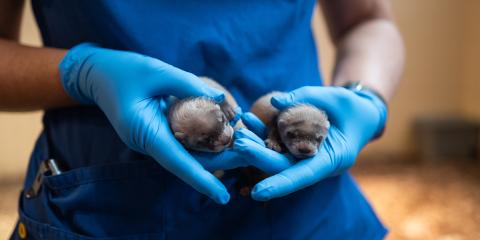
Read Some of the Most Exciting Stories From the Smithsonian Conservation Biology Institute in 2024 ›
Celebrate and look back at some of the groundbreaking achievements made by Smithsonian scientists this year.
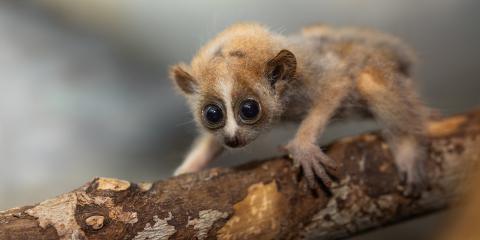
Read Some of the Zoo’s Most Amazing Animal Stories of 2024 ›
This year was filled with incredible and heartwarming stories about the animals and the people who care for them. Enjoy a look back at some of the amazing things that happened this year.

To Keep the National Zoo’s Pandas Satisfied, Staff Prepare an Endless Supply of Bamboo ›
Take a look behind the scenes as animal care teams provide an endless bamboo buffet to the Zoo's new giant pandas.
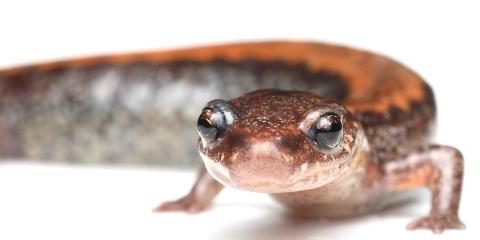
Meet the Eastern Red-Backed Salamander, A Tiny Environmental Hero ›
Next time you’re walking through fallen leaves in a forest, keep an eye out for the Eastern red-backed salamander—a small woodland creature with a huge role to play.

Giant Panda Video and Photo Gallery ›
The Zoo is home to two world-famous pandas who are symbols of conservation. View and download a gallery of Qing Bao and Bao Li images and video files.

How Keepers at Smithsonian's National Zoo Help Giant Pandas Feel at Home ›
A few weeks after their arrival, staff are helping giant pandas Bao Li and Qing Bao settle into their new home at Asia Trail.

Elderly Female Asian Elephant Dies at Smithsonian’s National Zoo and Conservation Biology Institute ›
The Smithsonian’s National Zoo and Conservation Biology Institute community is mourning the loss of Kamala, beloved member of its Asian elephant herd and ambassador for her species.

Giant Panda Program Media Resources ›
Find comprehensive resources for media on the giant panda program at the Smithsonian's National Zoo and Conservation Biology Institute.

Giant Pandas Arrive at Smithsonian’s National Zoo and Conservation Biology Institute From China ›
Giant pandas Bao Li and Qing Bao arrived at the Smithsonian’s National Zoo and Conservation Biology Institute (NZCBI) Tuesday, Oct. 15
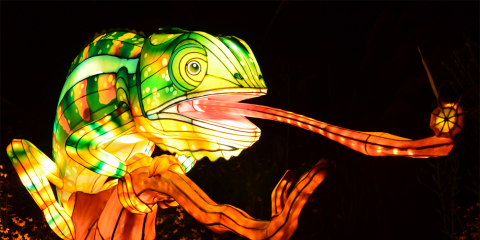
ZooLights Returns Nov. 22 to Smithsonian’s National Zoo and Conservation Biology Institute ›
Washington, D.C.’s beloved family-friendly winter wonderland, ZooLights, returns to brighten the holiday season.
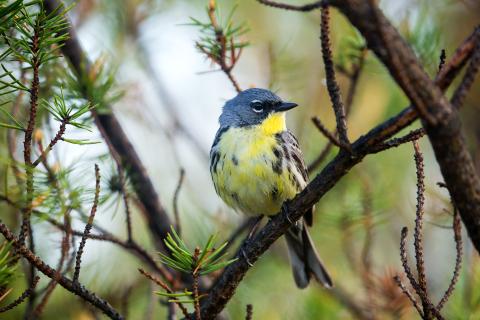
Drier Winter Habitat Impacts Songbirds’ Ability to Survive Migration ›
A new study shows environmental conditions in migratory birds’ winter homes affect their ability to survive the rest of the year.

Inside the Zoo: A Rare and Life-Preserving Cheetah Surgery ›
With the help of 3D modeling technology, a team of veterinary experts successfully carried out a rare spinal surgery on a female cheetah cub.
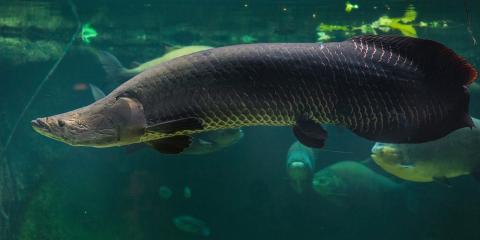
Creature Feature: Meet the 'Freshwater Giant' Arapaima ›
Reaching up to 10 feet (3 meters) long, arapaima are the largest freshwater fish in South America. Learn what else makes these animals unique.

Smithsonian’s National Zoo and Conservation Biology Institute Repatriates Kiwi Feathers to New Zealand ›
Kiwi feathers collected from across the U.S. and Europe will soon be heading home in a repatriation effort between the U.S. and New Zealand.
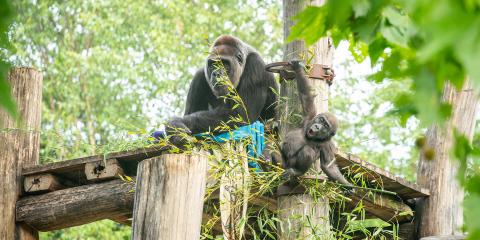
#GorillaStory: Happy World Gorilla Day, Zahra! ›
This summer has been eventful for our youngest western lowland gorilla, Zahra, who will be 16 months old on Sept. 27. Read primate keeper Francesca Bozzo's update!
Guam Sihek Released to the Wild ›
Conservation partnership advances the establishment of the first wild population in more than 30 years

Smithsonian’s National Zoo and Conservation Biology Institute Receives Accreditation From Association of Zoos and Aquariums ›
The Smithsonian’s National Zoo and Conservation Biology Institute has been awarded a five-year accreditation from the Association of Zoos and Aquariums.

David Rubenstein Donates $10 Million to Smithsonian’s National Zoo and Conservation Biology Institute’s Giant Panda Program ›
David M. Rubenstein has pledged $10 million toward the Zoo’s $25 million campaign to fund the giant panda conservation program.
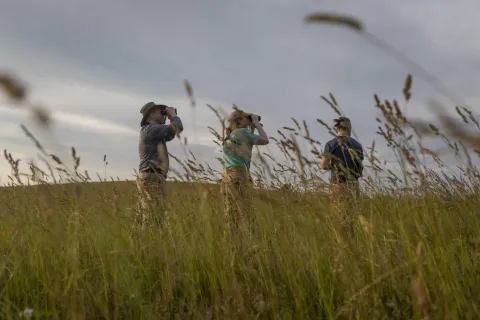
Across the Smithsonian, Researchers Are Working Together to Save Virginia’s Birds ›
Through a creative collaboration, Smithsonian scientists are using historic collections and current conservation practices to bring back declining populations of grassland birds.
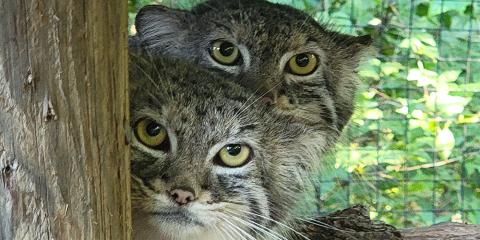
Creature Feature: Meet the “Grumpy” Pallas’s Cat ›
It looks like the angriest housecat you’ve ever seen, but it’s actually the Pallas’s cat: a small Asian wildcat known for its thick fur and unusual face.

How Do You Stomp Out An Elephant Disease? ›
How do you monitor disease in Asian elephants? By building their trust and teaching them to voluntarily participate in medical exams! Get a behind-the-scenes look at what goes into caring for our herd.

Study Finds Salamanders Are Surprisingly Abundant in Northeastern Forests ›
A recently published study sheds light on the ecological importance of red-backed salamanders in the northeastern United States. The article, published in the journal Biology Letters, revealed the amphibians’ densities and biomass across the region were much higher than expected, with a great...